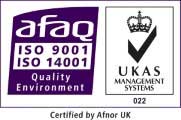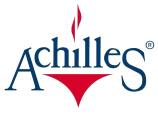Important Safety Information
Introduction
Clydesdale places the safety of all its customers at the top of our agenda, and we are committed to achieving this within all of the industries that we serve. As a company we have also committed ourselves to providing our customers with the highest possible standards of quality and reliability of Live Line Equipment, and a high level of customer service.
This we aim to achieve by ensuring that all of our staff have the most up-to-date product knowledge and information, delivered to the highest possible standard, along with a high degree of commitment, guaranteeing that these standards are rigorously maintained.
The philosophy of Live Line Working has been in existence for many years, and is a practice adopted not only by Distribution Network Operators (DNO's) within the UK, but throughout the world in countries such as the USA, Canada, Japan and many other countries throughout Europe.
DNO's have carried out Live Working on low voltage apparatus and high voltage equipment using Hot Stick Techniques for many years.
Distribution Network Operator customers, both domestic and commercial, have derived considerable and to some extent immeasurable benefits from Live Working through the avoidance of costly and disruptive interruptions to their supplies.
HV Live Line Tools and Equipment
Tools and equipment shall be kept in a clean and dry condition, and before use they shall be inspected to ensure they are in a suitable condition for use.
If a defect is found or suspected, then it shall not be used.
Before work can begin, a condition assessment of the equipment, including conductors, insulators, and other pole top and line fittings shall be carried out in order to minimise the possibility of failure during the work process.
During the course of HV Live Line Working all apparatus providing a second point of contact within the immediate area shall remain shrouded with exception of the conductor to be worked upon.
Safety
1. Isolation
2. Insulation
3. Protection
Isolation between the linesmen working in close proximity to live HV conductors and earth is provided by means of the insulated aerial device (I.A.D.) The component parts of the IAD: booms, buckets and bucket liners are manufactured from materials of high insulation value. The overall working rating of the I.A.D. should be a minimum of 46kV.
Insulation between the linesmen and HV apparatus is achieved by the application of approved insulation material (cover-up) to all live conductors and earthed metalwork within the working area. The cover-up i.e. line hose, blankets and insulator hoods should be rated to a minimum of 17kV for work on 11kV overhead lines, and a minimum of 36kV for work on 33kV overhead lines.
Protection of the linesmen is given by the wearing of rubber gloves and sleeves (which are rated at 17kV class 2, 26.5kV class 3 and 36kV class 4).
Caution: Live Line working practices should only be carried out by electrical workers who have been thoroughly trained in its correct and safe use. You should consult your own company's Health & Safety and Working Practices & Procedures before commencing any Live Line work.
Standards
P.P.E. and cover up should be tested in accordance with the following standards:
Conforming standards for gloves: BS EN 60903 ASTM D120
Conforming standards for sleeves: BS EN 60984 ASTM D1051
Conforming standards for blankets: ASTM F479/D1048
Conforming standards for line hose: ASTM F478/D1050
Conforming standards for insulator covers: ASTM F478/D1049
Voltage Classes
BS EN 60903 stipulates the following electrical test requirements for insulating gloves according to their voltage class:
| AC | DC | ||||||
| Class | Max Working Voltage | Proof Test Voltage | Max Leakage Current mA Glove Length | Proof Test Voltage | |||
| 11" | 14" | 16" | 18" | ||||
| 0 | 1kV | 5kV | 12" | 14" | 16" | N/A | 10kV |
| 1 | 7.5kV | 10kV | N/A | 16" | 18" | N/A | 20kV |
| 2 | 17kV | 10kV | N/A | 18" | 20" | N/A | 30kV |
| 3 | 26.5kV | 30kV | N/A | N/A | 22" | 24" | 40kV |
| 4 | 36kV | 40kV | N/A | N/A | 24" | 26" | 60kV |


